Wishing everyone happy holidays and a joyful New Year from the Healthify team. Don't forget to Slip, Slop, Slap and Wrap!
Healthy eating for children
Key points about healthy eating for tamariki (children)
- You can help tamariki develop positive eating habits by giving them the opportunity to try a variety of foods.
- You can also help by allowing them to choose what, and how much, they want to eat from the options you provide.
- Healthy eating doesn't mean you have to completely change your diet, or avoid certain foods. This especially applies to traditional cultural food – all foods can be included in a healthy diet.
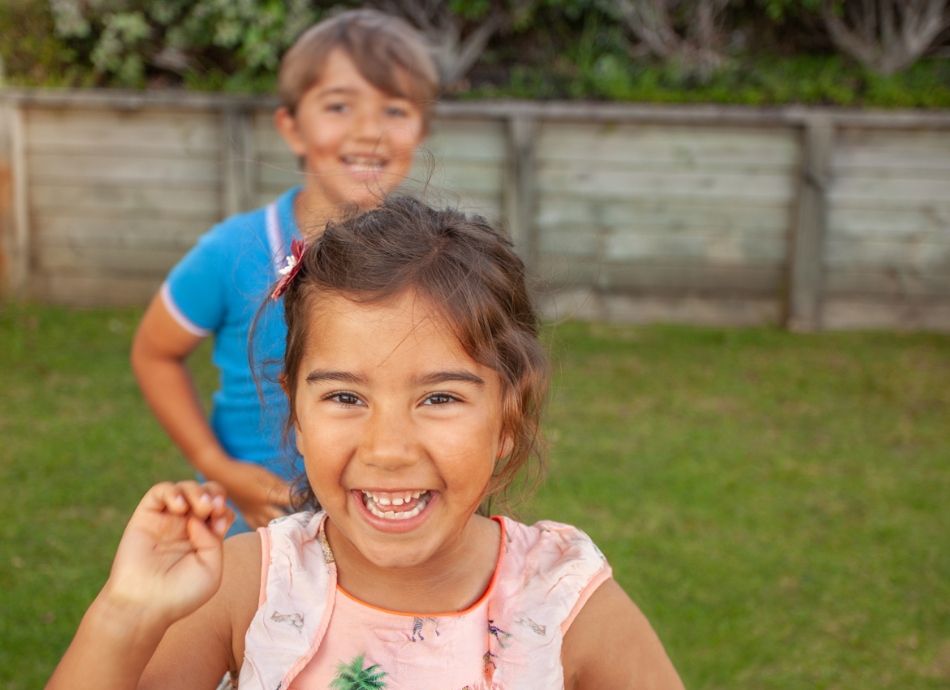
- Whenever you can, eat together as a whānau.
- Use meal times as a time for your family to hang out and chat about the day.
- Switch off devices (eg, TV) and leave cell phones somewhere else.
- Choose meal times that suit your tamariki – this might mean eating a bit earlier than you usually do.
- Using mindfulness techniques (see the video below) can teach kids to slow down and think about what they're eating.
Video: How to Eat More Mindfully | The Science of Happiness
This video may take a few moments to load.
(Greater Good Science Center, US, 2020)
- Offer your child 3 meals a day – don't forget breakfast!
- Provide 2-3 snacks in-between meals.
- Develop a routine and try to keep to specific meal and snack times.
- Give your child a wide range of food options, including fruit and vegetables.
- Encourage tamariki to taste and try new foods in a pressure-free environment.
- Remember that it takes 8-15 times trying something new before it becomes familiar, so keep trying new foods all the time.
- Model healthy eating behaviours so tamariki can learn from you.
- Take your tamariki food shopping and involve them in selecting foods, including fruit and vegetables.
- Make cooking and food preparation exciting – include tamariki from a young age and involve them more and more as they grow up.
- Limit takeaways, but allow yourself to have them occasionally if this is an easier option.
Like adults, tamariki need to consume a range of foods to be nourished and grow well. There are 4 main food groups which provide protein, fats, carbohydrates, vitamins, and minerals. To make sure your child gets all of the nutrition they need, try to include foods from all of the food groups listed below:
- vegetables and fruit
- grain foods (eg, breads and cereals)
- milk and milk products (or calcium fortified alternatives)
- legumes (cooked dried beans, peas and lentils), lean red meats (or meats with the fat cut off), chicken, seafood, eggs, soy products (eg, tofu), and nuts and seeds.
Read more about food groups and providing variety for tamariki.
Tamariki often don’t eat as much as adults. Encourage your child to listen to their hunger cues so they don't overeat. Encouragement to eat slowly can be helpful, so that their stomach has time to tell them when it's full of food. When tamariki say they are full, let them stop eating – they don't need to finish everything on their plate! Leftovers can be saved for another time. On the other hand, if they're still hungry allow them to eat a bit more, or offer fruit or vegetables as a snack.
Recommended serving sizes for different foods are a guide only. They may be too big for your child to eat in a single meal, especially if they're younger. For example, a whole pottle of yoghurt can be divided into several smaller amounts for your child to eat throughout the day.
Have a look at the serving sizes page for more help with this.
It’s OK to have foods that are high in fat, sugar or salt occasionally, but eating a lot of these foods can sometimes lead to health issues like high blood pressure, fatty liver disease, or heart disease.
A few examples of foods high in salt, fat, or sugar are meat pies, potato chips, chocolate, sweets/lollies, cookies or biscuits, deep fried foods, and fizzy drinks.
These foods can be included in a balanced diet in moderation. It’s important to remember that there's no such thing as good or bad food, but some foods have more nutritional value than others.
It might be helpful to think about how you could add an extra serving of vegetables or fruit to a meal. For example, adding a side of peas and broccoli to a meat pie for a quick and easy dinner.
When having takeaways, choose meals that include vegetables or salad
Many takeaways contain a lot of fat, salt and/or sugar. Some takeaways with less fat may include:
- kebabs or wraps with added salad
- pizza with added vegetables
- sushi (limit deep fried options)
- bento bowl/poke bowl with salad and vegetables added
- wedges or thicker chips
- rice/noodle dishes with plenty of vegetables.
You could also serve vegetables on the side with takeaway options at home, for example coleslaw or peas with fish and chips.
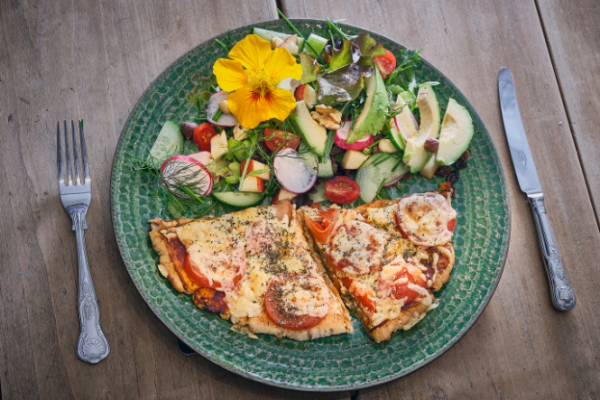
Image credit: Canva
For more information see our healthy eating and drinking section.
Tamariki need to eat consistently throughout the day to meet their energy needs for growth. Offer 3 meals and 2–3 snacks each day.
- If you can, avoid giving snacks within 1 hour of a main meal, or your child may not have an appetite for their food.
- Snacks can act as a miniature meal that provides protein, energy, vitamins, and minerals. An example of this might be something like cut up vegetable or fruit with cottage cheese, hummus, or yoghurt.
- You may need to change the size and/or texture of certain foods to make them safe for young children – to prevent choking (see below).
Read about healthy snack ideas for children.
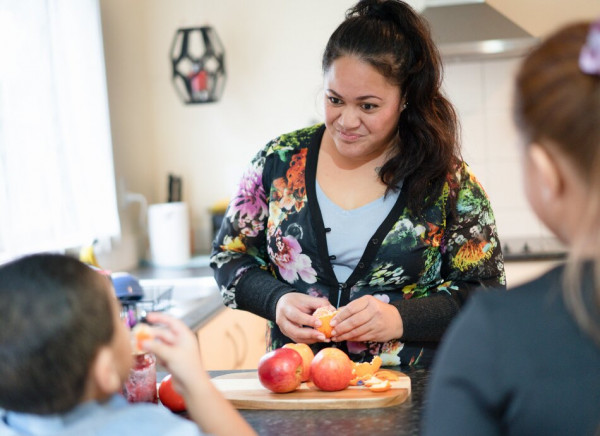
Image credit: Canva
Vegetarian diets should also include a variety of vegetables and fruit, cereals, breads, legumes, eggs, milk products, seeds and nuts. If your child doesn't consume cow’s milk, provide a non-dairy milk such as soy milk with vitamin B12 and added calcium instead. If you're worried about your child's diet, consult a dietitian or registered nutritionist for tailored advice. Here are some links to find a dietitian(external link) and find a nutritionist.(external link)
Read more about vegetarianism and veganism.
Fussy eating is normal in young children and quite common. You might have to offer your child a new food 8 to 15 times, or even more before they will try eating it. Exposure to a new food can even include things like grocery shopping and having the child put the item in question in the trolley. Serving a new food along a “safe” or accepted food can also help to encourage acceptance of a new food.
Let your child choose the amount of food they eat and try to make mealtimes exciting and relaxing rather than stressful or rushed. Consult your healthcare provider, a specialist paediatric fussy-eating dietitian, or registered nutritionist if you are concerned about your child’s fussy eating or if you are concerned about their growth.
Here are some links to find a dietitian(external link) and find a nutritionist.(external link)
For more information see our fussy eating section.
It can be pretty easy for young kids to choke on their food since they're still learning how to chew, grind, and swallow food correctly.
To limit choking risk:
- Always have young children sit down during eating or drinking and have an adult supervising.
- Provide foods that are suited to your child's chewing or grinding abilities.
- Sometimes it can help to change the texture of your child's food by cooking it (boil, steam, microwave, roast), grating, mashing, or chopping it into smaller pieces.
- Remove any tricky/dangerous parts of the food eg, peel off apple skin or chop out any tough fibres.
- Don't give small or hard foods (eg, whole nuts and big seeds) to any child under 5 years of age.
Food allergies and/or intolerances affect about 4–8% of tamariki, however, a lot of tamariki will outgrow these in time.
If you're ever unsure, you could consult include your:
- healthcare provider
- public health nurse
- registered nutritionist(external link) or dietitian(external link)
- Māori or Pacific Peoples health worker
- Māori health service.
For more information see our allergies section.
Food labels contain lots of information, some of this can help with your healthy food decisions. Read more about how to read food labels.
My family food – meal ideas that are tasty, fast, easy and low-cost(external link) Health Promotion Agency, NZ
Preventing choking in young children(external link) Health New Zealand | Te Whatu Ora
Feeding your child (1 year and over)(external link) Health New Zealand | Te Whatu Ora
Kai Maori – traditional and ‘semi-traditional’ Māori foods(external link) Toi Tangata, NZ
Pacific Heartbeat Programme – list of useful resources to help keep you healthy(external link) Heart Foundation of NZ
How to get 5+ a day everyday(external link) 5+ a day, NZ
Apps
Nutrition apps
Nutrition for children apps
Resources
My goal chart(external link) Health New Zealand | Te Whatu Ora, Te Aka Whai Ora, MOH, NZ
Eating for healthy children aged 2–12 years(external link) Health New Zealand | Te Whatu Ora
Healthy heart visual food guide poster(external link) Heart Foundation, NZ
Eating for healthy babies and toddlers(external link) Health Promotion Agency and Ministry of Health, NZ
Choose a balance of healthy food every day poster(external link) Ministry of Health and Health Promotion Agency, NZ
References
Brochures
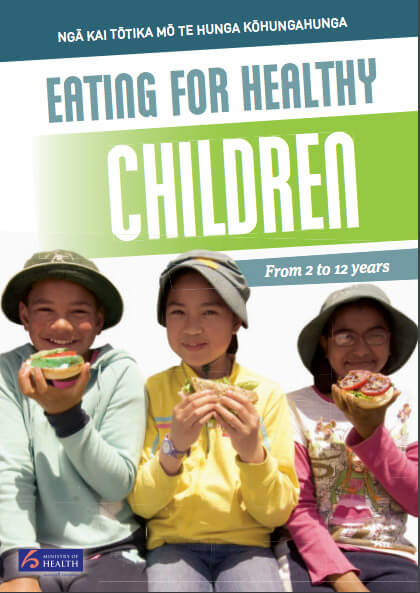
HealthEd and Ministry of Health, NZ, 2017

Health Promotion Agency and Ministry of Health, NZ, 2013
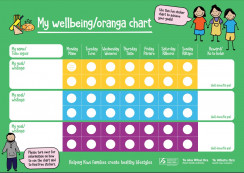
My goal chart Health New Zealand | Te Whatu Ora, Te Aka Whai Ora, MOH, NZ
Credits: Healthify editorial team. Healthify is brought to you by Health Navigator Charitable Trust.
Reviewed by: Madison Rich, Dietitian at Dingwall Trust.
Last reviewed:





